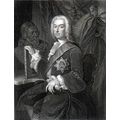Girtin, Thomas - The White House at Chelsea 1800 - art postcard (Tate)
- Condition : Used
- Dispatch : 2 Days
- Brand : None
- ID# : 200104278
- Quantity : 1 item
- Views : 378
- Location : United Kingdom

- Seller : justthebook (+1703)
- Barcode : None
- Start : Fri 09 Apr 2021 07:54:30 (EDT)
- Close : Run Until Sold
- Remain : Run Until Sold
Checks/Cheques
 for 1 item(s) edit
for 1 item(s) edit
Shipping Calculator
More Listings from This Seller view all
Seller's Description
- Art Postcard
- Work of art title: The White House at Chelsea, 1800
- Artist (if known): Thomas Girton
- Media or other details: pencil, watercolour on off white laid drawing
- Publisher / Gallery: Tate Gallery (London)
- Postally used: no
- Stamp & postmark details (if relevant):
- Size: Modern
- Notes & condition details:
NOTES:
Size: 'Modern' is usually around 6in x 4in or larger / 'Old Standard' is usually around 5½in x 3½in. Larger sizes mentioned, but if you need to know the exact size please ask as this can vary.
All postcards are not totally new and are pre-owned. It's inevitable that older cards may show signs of ageing and use, particularly if sent through the post. Any faults other than normal ageing are noted.
Stock No.: A1038
Please ask if you need any other information and I will do the best I can to answer.
------------------------------------------------
Postage and packing charge should be showing for your location (contact if not sure).
UK - PayPal, Cheque (from UK bank) or postal order
I will give a full refund if you are not fully satisfied with the postcard.
----------------------------------------------
Thomas Girtin (18 February 1775 – 9 November 1802) was an English watercolourist and etcher. A friend and rival of J. M. W. Turner, Girtin played a key role in establishing watercolour as a reputable art form.
Thomas Girtin was born in Southwark, London, the son of a wealthy brushmaker of Huguenot descent. His father died while Thomas was a child, and his mother then married a Mr Vaughan, a pattern-draughtsman. Girtin learnt drawing as a boy (attending classes with Thomas Malton), and was apprenticed to Edward Dayes (1763–1804), a topographical watercolourist. He is believed to have served out his seven-year term, although there are unconfirmed reports of clashes between master and apprentice, and even that Dayes had Girtin imprisoned as a refractory apprentice. Certainly Dayes did not appreciate his pupil's talent, and he was to write dismissively of Girtin after his death.
While a youth, Girtin became friends with J. M. W. Turner and the teenagers were employed to colour prints with watercolours.[2] Girtin exhibited at the Royal Academy from 1794. His architectural and topographical sketches and drawings established his reputation, his use of watercolour for landscapes being such as to give him the credit of having created Romantic watercolour painting. He went on several sketching tours, visiting the north of England, North Wales and the West Country. By 1799, he had acquired influential patrons such as Lady Sutherland, and the art collector Sir George Beaumont. He was the dominant member of the Brothers, a sketching society of professional artists and talented amateurs.
In 1800, Girtin married Mary Ann Borrett, the 16-year-old daughter of a well-to-do City goldsmith, and set up home in St George's Row, Hyde Park, next door to the painter Paul Sandby. By 1801, he was a welcome houseguest at his patrons' country houses such as Harewood House and Mulgrave Castle, and able to charge 20 guineas for a painting, but his health was deteriorating.
In late 1801 to early 1802, he spent five and a half months in Paris, where he painted watercolours and made a series the pencil sketches which he engraved on his return to London. They were published as Twenty Views in Paris and its Environs after his death. In spring and summer 1802, Girtin produced a panorama of London, the "Eidometropolis", 18 feet high and 108 feet in circumference which was exhibited with success that year. It was notable for its naturalistic treatment of urban light and atmosphere. That November, Girtin died in his painting room; the cause was variously reported as asthma, consumption, or "ossification of the heart." He was buried in the churchyard of St Paul's, Covent Garden in London.
Girtin's early landscapes are akin to 18th-century topographical sketches, but in later years he developed a bolder, more spacious, romantic style, which had a lasting influence on English painting. The scenery of the north encouraged him to create a new watercolour palette of warm browns, slate greys, indigo and purple. He abandoned the practice of undershadowing in grey wash and then adding pastel patches of colour, in favour of broad washes of strong colour, and experimented with the use of pen, brown ink and varnish to add richer tones. Girtin's early death reportedly caused Turner to remark, "Had Tom Girtin lived I should have starved."
Exhibitions and retrospectives
The British Museum and the Victoria and Albert Museum have collections of his work. The British Museum was given significant Girtin watercolours by the collector Chambers Hall.[3]
In July 2002 Tate Britain organised an exhibition, Thomas Girtin: The Art of Watercolour which aimed to "reveal his technical genius".[4]
Listing Information
| Listing Type | Gallery Listing |
| Listing ID# | 200104278 |
| Start Time | Fri 09 Apr 2021 07:54:30 (EDT) |
| Close Time | Run Until Sold |
| Starting Bid | Fixed Price (no bidding) |
| Item Condition | Used |
| Bids | 0 |
| Views | 378 |
| Dispatch Time | 2 Days |
| Quantity | 1 |
| Location | United Kingdom |
| Auto Extend | No |






![Van Gogh, Vincent - Sunflowers [4th] - National Gallery art postcard c.1960s](https://pic.ebid.net/upload_medium/2/7/0/1424731301-1918-150.jpg)













